highlights some key areas where Beijing is poised to become dominant.
By Dilip Hiro
TomDispatch.com
 Like his immediate predecessor, Joe Biden is committed to a distinctly anti-China global strategy and has sworn that China will not “become the leading country in the world, the wealthiest country in the world, and the most powerful country in the world… on my watch.” In the topsy-turvy universe created by the Covid-19 pandemic, it was, however, Jamie Dimon, the CEO and chairman of JP Morgan Chase, a banking giant with assets of $3.4 trillion, who spoke truth to Biden on the subject.
Like his immediate predecessor, Joe Biden is committed to a distinctly anti-China global strategy and has sworn that China will not “become the leading country in the world, the wealthiest country in the world, and the most powerful country in the world… on my watch.” In the topsy-turvy universe created by the Covid-19 pandemic, it was, however, Jamie Dimon, the CEO and chairman of JP Morgan Chase, a banking giant with assets of $3.4 trillion, who spoke truth to Biden on the subject.
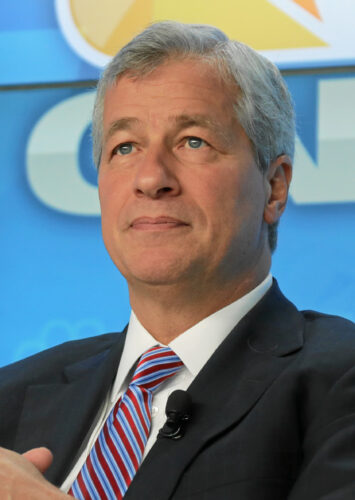
JPMorgan Chase CEO James Dimon in 2013. (World Economic Forum, Flickr, CC BY-SA 2.0)
While predicting an immediate boom in the U.S. economy “that could easily run into 2023,” Dimon had grimmer news on the future as well. “China’s leaders believe that America is in decline,” he wrote in his annual letter to the company’s shareholders.
While the U.S. had faced tough times in the past, he added, today “the Chinese see an America that is losing ground in technology, infrastructure, and education — a nation torn and crippled by politics, as well as racial and income inequality — and a country unable to coordinate government policies (fiscal, monetary, industrial, regulatory) in any coherent way to accomplish national goals.” He was forthright enough to say, “Unfortunately, recently, there is a lot of truth to this.”
As for China, Dimon could also have added, its government possesses at least two powerful levers in areas where the United States is likely to prove vulnerable: dominant control of container ports worldwide and the supplies of rare earth metals critical not just to the information-technology sector but also to the production of electric and hybrid cars, jet fighters, and missile guidance systems. And that’s only a partial list of the areas where China is poised to become dominant in the foreseeable future.
Here’s a likely scenario.
The Digital Yuan
Within the broad headline of the globe’s “second-largest economy,” China has already either surpassed the United States or is running neck-and-neck with it in certain specific sectors.
With a global smartphone market share of 20 percent in the second quarter of 2020, China’s Huawei Technologies topped the charts, marginally exceeding South Korea’s Samsung, and well ahead of Apple, according to the International Data Corporation.
This happened despite a concerted drive by President Donald Trump’s administration to damage Huawei that culminated, in May 2020, with Washington barring companies worldwide from using U.S.-made machinery or software to design or produce chips for that company or its entities from that September on. Nonetheless, with a 47 percent share of China’s booming 5G smartphone market, Huawei topped the list there while it kept up its investment in future-oriented, cutting-edge technologies and basic research to the tune of a striking $3 billion to $5 billion annually.
Broadly speaking, China continues to make impressive strides when it comes to developing its information and communications technology sector. Its Fintech (Financial Technology) report, published in October 2020, showed that an estimated 87 percent of Chinese consumers used fintech services. With a vast mobile-payment system that hit $29 trillion (200 trillion yuan) worth of payments in 2019, China is shaping up to become the globe’s first “cashless society” and its largest financial-technology ecosystem by the end of this decade.
Less than 10 percent of Americans use mobile payments, which means a similar scenario for the United States is nowhere on the horizon. With mobile transactions in China already accounting for at least four out of every five payments and more than half the value of all non-cash retail payments, that country is poised to leave the U.S., a comparative laggard in fintech, shackled to a cash-dominated system.
In their relentless drive for innovation, the Chinese authorities started pushing the development of a digital currency in certain regions in August 2020. Their specific goals were to make daily life easier for citizens and digital payments more secure. While non-bank payment platforms like Alipay and WeChat Pay required users to link to bank accounts, a digital wallet with an e-currency deposit could be opened with a unique personal identification — a driver’s license or a mobile phone number — enabling the un-banked population of China to embrace the digital world.
As a result, the People’s Bank of China became the first major central bank to issue a virtual currency. A broader roll-out is expected for the Winter Olympics in Beijing in February 2022, which will give the digital yuan international exposure.
This has alarmed the Biden administration. Officials at the Treasury Department, the State Department, the Pentagon, and the National Security Council are frantically trying to comprehend the potential implications of a virtual yuan system. They are particularly eager to understand how it would be distributed, and whether it could be used to bypass Washington’s international sanctions as applied to Iran. What distresses some American officials and experts is the notion that someday China’s virtual yuan could replace the U.S. dollar as the world’s dominant reserve currency.
At the Federal Reserve, Chairman Jerome Powell insisted that the central bank was involved in a large-scale research and development project on a possible future digital dollar, though pointing out that such a project could only be launched via a law that would have to be passed by a deeply divided Congress. In short, irrespective of the future of China’s virtual currency, a digital dollar is not likely, not in the near future anyway.
Building Infrastructure (or Not)
As for recent economic history, even a cursory look at the performances of the United States and China in combating the 2008 financial meltdown tells a striking tale.
China made an indelible mark in meeting that financial challenge. Its government sharply increased its infrastructure spending, resulting in higher imports that helped counter flagging global demand. While this move increased Beijing’s debt, it also helped build a foundation to further transform the country’s economy into a productivity-led growth model. A decade after that great recession, according to the World Economic Forum’s Global Competitiveness Report, China’s infrastructure ranking jumped from 66th place to 36th place out of 152 countries.
Although infrastructure building on a large scale requires significant upfront investment, it’s guaranteed to yield productivity gains in the long run. Time and cost savings for commuters, improved market access, healthier competition, increased exchange of ideas, and enlarged innovation capacity, all aided by modern infrastructure, are a springboard for economic development.
During the decade following the 2008 crisis, the number of Chinese cities with metro services jumped from 10 to 34 and 1.1 million kilometers of highways were built, raising the total to 4.8 million kilometers. The length of its high-speed rail system shot up by 52,000 kilometers to 132,000 kilometers. Introduced on the eve of the 2008 Olympics in Beijing, it’s now by far the world’s longest system, accounting for two-thirds of the globe’s high-speed rail. Its advances in information-and computer-technology were equally impressive. On average, mobile-phone subscriptions came to exceed one per person — about the same as in the United States.
High-speed rail (of which the United States has none) reduces journey times, while linking dense urban areas with less crowded cities. In doing so, it allows for a more balanced distribution of labor and business development without sacrificing the benefits of an increasingly urbanized economy. Economies of scale in turn mean that productivity rises as rail usage increases.
Little wonder, then, that President Barack Obama and his team promoted the $787 billion American Recovery and Reinvestment Act of 2009 as an infrastructure-building program in response to the 2008 economic crisis. In reality, however, only $80 billion, a 10th of the money Congress sanctioned, would be devoted to actual infrastructure. Of that, about a third was spent on roads and bridges, improving about 67,600 kilometers of roads and 2,700 bridges. The program also included investment in modern infrastructure like smart grids and broadband development.
In 2010, Obama announced what was to be the “largest investment in infrastructure since the Interstate Highway System,” the creation of a high-speed rail network that would rival China’s. More than a decade later, the only visible progress is a much-delayed and still incomplete 275-kilometer Central Valley California line from Bakersfield to Merced. And in the Trump years, when essentially no government money went into such projects, “infrastructure week” became a standing joke. President Biden seems determined to rectify this, but how successful he’ll be with his $2 trillion infrastructure proposal in the face of a rigidly divided Congress remains to be seen.
For its part, the Chinese government combined its program of rapid infrastructure development with upgrading of the labor force. It did so by implementing an educational system that stressed science, technology, engineering, and math, known as STEM. By achieving higher productivity in this way, the government planned to compensate for a projected shrinkage in its work force.
To promote STEM, the government issued guidelines in 2016 to create a national development strategy aimed at advancing China to the forefront of innovative countries by 2030. In February 2017, the Ministry of Education officially added STEM education to the primary-school curriculum. Since then, encouraged by official policies, schools in both the public and private sectors have implemented such programs.
In 2019, the government allocated 100 percent of its research funding to top universities to the ones that concentrated on STEM disciplines. By comparison, South Korea allocated 62 percent of such funding that way. By contrast, U.S. universities ranked in the top 100 maintained a greater balance in funding among STEM fields, humanities, and social sciences.
In October 2019, three of China’s biggest mobile-phone carriers launched advanced 5G services, giving it the world’s largest 5G mobile network. A year later, The Wall Street Journal reported that China had more 5G subscribers than the U.S., not just in total but per capita.
Given the ubiquity of smartphones, the news that America seemed to be losing the tech race to China was widely noted. Mostly ignored, however, was the extent to which the U.S. had become vulnerable to Chinese pressure in international trade.
America’s Vulnerabilities
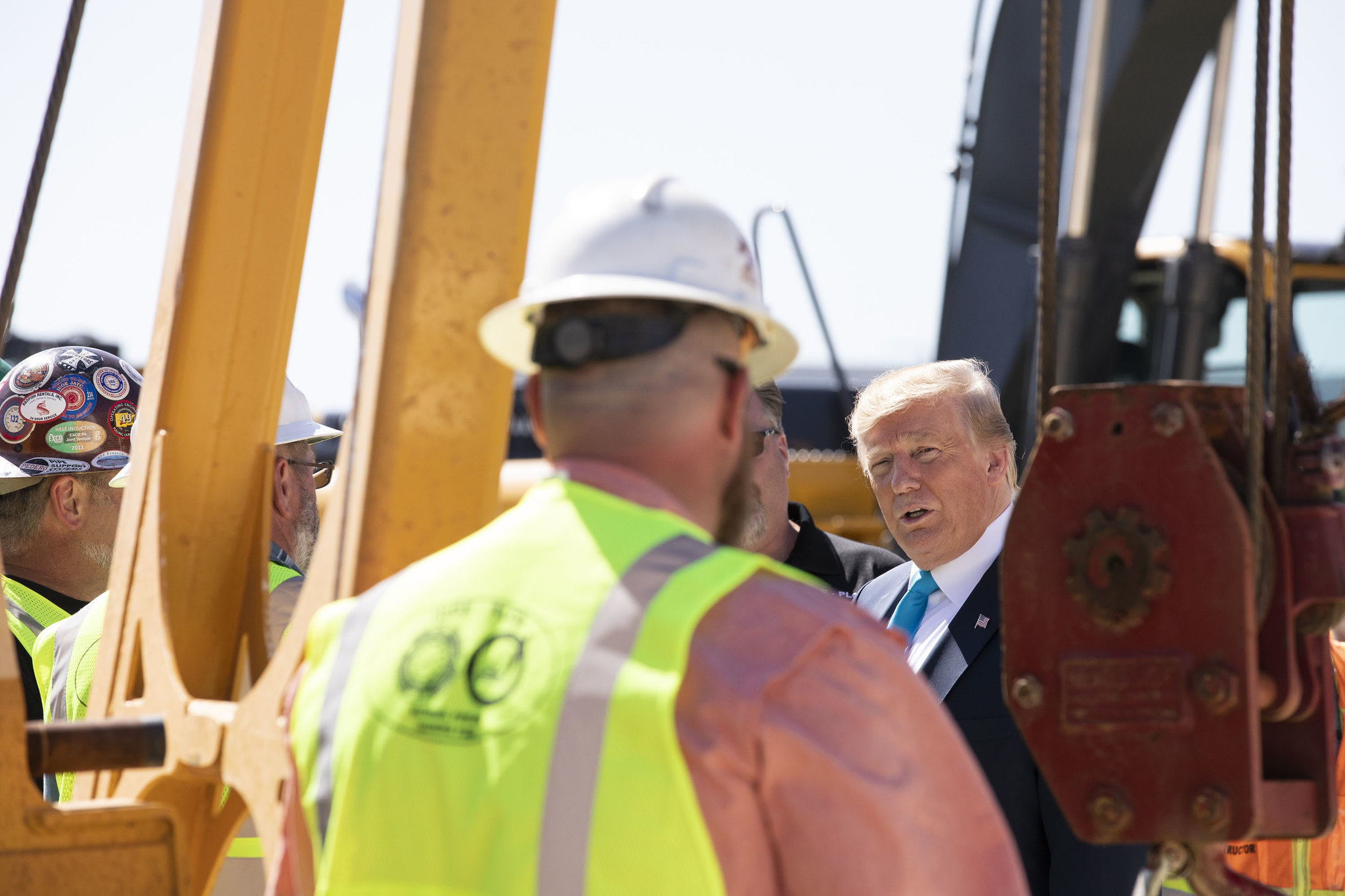
April 2019: President Donald Trump visits the International Union of Operating Engineers International Training and Education Center in Crosby, Texas. (Official White House Photo by Joyce N. Boghosian)
In testimony before Congress in October 2019, Carolyn Bartholomew, chairwoman of the U.S.-China Economic and Security Review Commission, revealed that at least two-thirds of the world’s top 50 maritime container ports were directly owned and managed by the Chinese or supported by that country’s investments (up from roughly 20 percent a decade ago). These included terminals at major American container ports in Los Angeles and Seattle. When it came to such ports, it led the world with seven of the 10 largest ones.
A year earlier, officials at the state-owned China Ocean Shipping Company, one of the globe’s largest container shipping lines, acknowledged that the company had connected its routes along what was officially called the Maritime Silk Road, linking regional markets in West Africa, Northern Europe, the Caribbean, and the U.S. to form a more comprehensive and balanced globalized trading network.
“By owning and/or operating a network of logistical nodes across Asia, Europe, and Africa, China can control a significant portion of its inbound supply chain for essential commodities and outbound trade routes for its exports,” Bartholomew explained. “In the event of conflict, China could use its control over these and other ports to hinder trade access to other countries.”
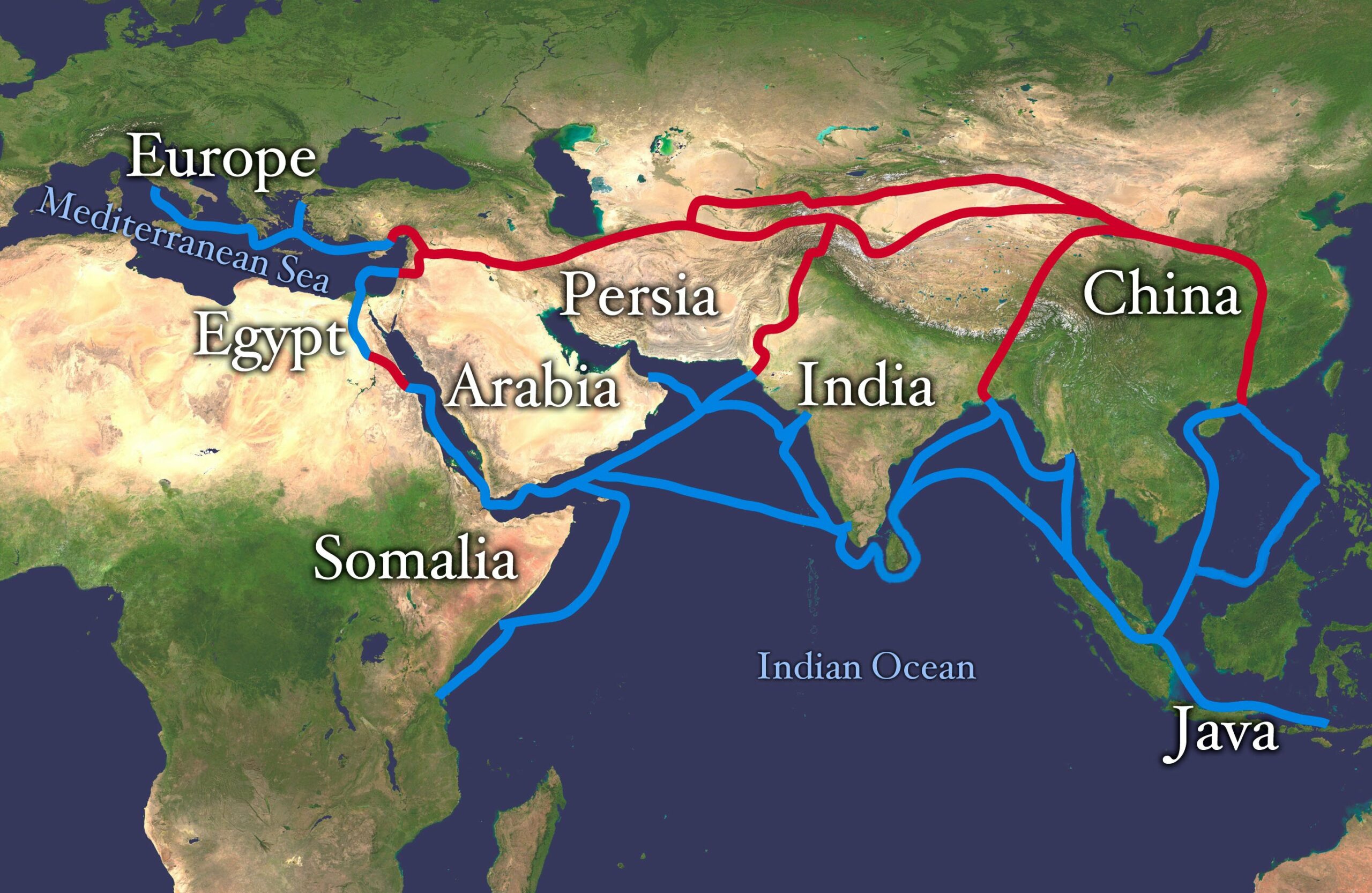
Silk Road: Red is land route, blue is sea/water route. (NASA/Goddard Space Flight Center, Wikimedia Commons)
In the manufacturing sector, China finds itself in a privileged position by virtue of its special mineral deposits, called rare earth elements. A group of 17 rare earth metals, including lanthanum, cerium, yttrium, europium, and gadolinium, often called “industrial gold,” are critical components of such high-technology and clean-energy products as wind turbines, solar panels, and electric cars, because of their magnetism, luminescence, and strength. They are also used in a wide variety of weapons from jet fighters to nuclear submarines.
Unsurprisingly, in recent years, there has been a rapid rise in the demand for these minerals in advanced economies. They are dispersed in low concentrations and are costly to extract from ore, an industry in which China has invested a great deal since the 1970s.
According to the U.S. Geological Survey, in 2020, China accounted for 58 percent of rare earth minerals production, down from around 90 percent four years earlier, as the United States and Australia boosted their own mining of them. Still, as of 2018, the United States imported 80.5 percent of its rare earth metals from China. In May of that year, the Trump administration added these to a list of minerals deemed critical to American economic and national security. And in July 2019, it declared them “essential to the national defense,” which freed up resources for the Department of Defense to take action to secure a domestic rare earth production capability.
Even if the mining of these ores increased in the U.S., refining them requires specialist technology and trained personnel as well as high upfront investment. Due to the lack of these in the U.S. so far, China continues to enjoy a near monopoly in processing the ore, with the raw material containing the prized metal mined outside China shipped to the Chinese sites. The refining process also generates large amounts of radioactive waste and pollutes the environment. As a result, developed countries usually opt for getting the refining done in emerging economies.
All in all, when you view the globe in the throes of a once-in-a-century pandemic, you find an authoritarian state, wedded to centralized planning, initiating programs with long-term benefits for its citizens and seeing them through. You also see a politically riven democratic republic operating primarily on an ad hoc basis.
The stark truth is that an American president cannot even bet on his policies, however laudable or otherwise, surviving his four-year term. Trump’s succession after the Obama era illustrated this dramatically, as has that of Trump’s successor, Biden. When judged purely on the basis of final results, centralized planning clearly beats short-term programming, even if it is viewed with a mixture of derision and condemnation by the Western governments that Biden is attempting to co-opt to challenge China. The reality of our moment: that country is now rising on a distinctly wounded planet.
Dilip Hiro is the author of Cold War in the Islamic World: Saudi Arabia, Iran and the Struggle for Supremacy and most recently, After Empire: The Rise of a Multipolar World.
This article is from TomDispatch.com.
The views expressed are solely those of the author and may or may not reflect those of Consortium News.
Please Support Our
Spring Fund Drive!


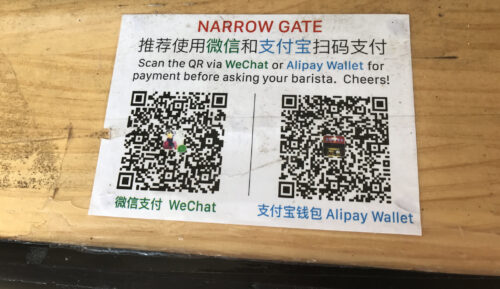
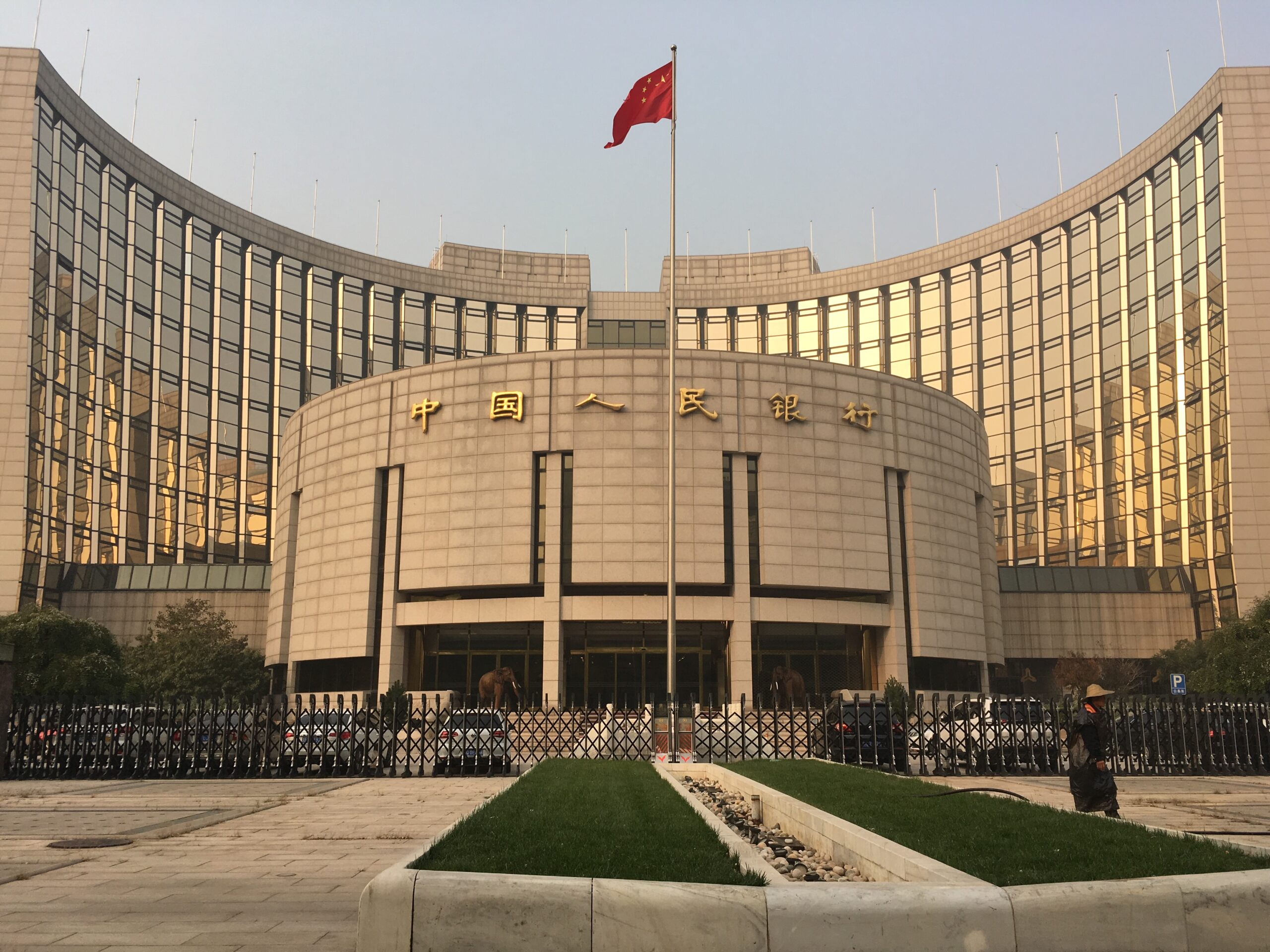
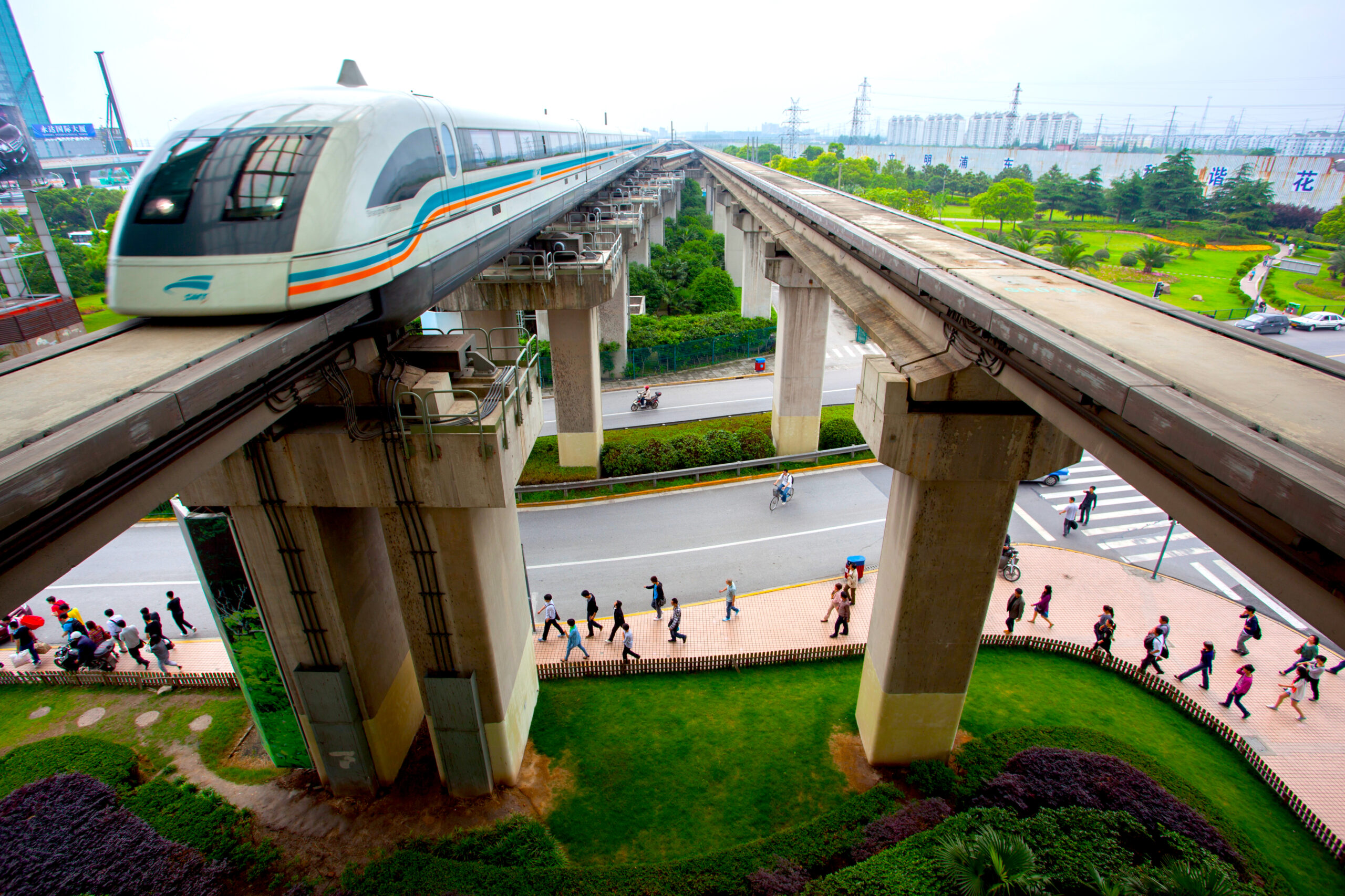


Nikita Khrushchev, a former Secretary of the USSR once said, “We will bury you”. Obviously, the Russians didn’t. The Chinese won’t bury us either. We will bury ourselves, much as the Romans did. By squandering all our wealth in our quest to dominate the world, there will be nothing left and the empire will rot from within.
“Joe Biden . . . has sworn that China will not “become the leading country in the world, the wealthiest country in the world, and the most powerful country in the world… on my watch.”
That sounds very like Churchill saying he did not become Prime Minister to preside over the end of the Empire. Of course, that is exactly what he did. He could no more hold back the tide than could King Canute.
The US is already paying China for its patents. China has 1.6 million yearly and the US has 0.6 million and it will only get worse.
Well, Australia seems to have chosen the wrong horse in the race for the future! Being a “friend” to the USA and treating China, its main trading partner, as an enemy because the Trump/Biden policies dictated it has not led to success for the Australian economy. It is ironic that the control of Covid-19 has been markedly successful by following the strict Chinese example.
The solution is simple. The US had the correct policies in the 50’s and 60’s. Import tariffs should be high, there should be living wages, there should be a real graduated tax rate up to 90%, and the dollar should be on the gold standard. Those policies enabled a middle class population, education in state colleges for everybody, affordable healthcare, and highways, bridges, airports, railroads, community schools, state universities, and more. The one last criteria is a slashing of the military and its budget, same with the militarized police. One last thing, members of congress and the executive are forbidden from business ties with foreign entities and investing in stocks while in office, campaign contributions from the public purse, and limited to an equal amount per candidate. No revolving doors allowed. No members of congress of the government can have dealings with relatives who are involved with foreign companies. All voting is manually done and counted. No voting machines. All education is public with equal funding to all schools. No private prisons.
Sounds like socialism, doesn’t it :)
OLD BIDEN IS NOT ABLE TO LEARN NEW WAYS. OBAMA TRIED TO MODERNISED USA BUT DEMOCRACY/CONGRESS AND OLD LEADERS LIKE TRUMP AND NOW BIDEN ARE NOT CAPABLE TO MOVE NATIONAL PROGRESS LIKE SOCIALIST CHINA UNDER XI JINPING. NOTHING CAN STOP CHINA LEADING THE WORLD. EUROPE ASIA AFRICA HAVE TO STOP USA FROM STARTING WW III . AND END CIVILISATION ON EARTH !!!! KAMALA HARRIS ,ANDREW YANG ,AND WHO ELSE? MAY BE THE ONES TO CHANGE BIDEN AND COOPERATE WITH XI JINPING.
Biden’s anti-China ambitions? An equal case can be made for Xi’s ambitions for redivision of global imperialist spoils. The contradiction between an established but decaying imperial power and a rapidly expanding one is real and unavoidable. The way out is not choosing a side but finding a path to revolution in each country.
If China was an imperialist power the world would already have been reduced to radioactive rubble. One of the great strengths of Chinese socialist thought is the realization that the class struggle does not end with the conquest of state power by the Communist party. The class struggle continues with its locus changing from the economy to the socialist state itself. Although Chinese politics are presented as monolithic in the west, the Communist party serves as a forum to mediate the class struggle between the ‘capitalist roaders’ and those who hold fast to Chinese socialism. The unrelenting hostility of the West in recent times has been invaluable in demonstrating to the capitalist roaders that their interests are better served by remaining a partner in the Chinese system, rather than becoming a weak comprador bourgeoisie in a devastated China that has been brought to heel by the west.
Chinese socialism is necessarily different than western socialism because its tasks are very different. Socialists in the west confront a developed capitalism with high levels of technological development and ‘productivity’, ready to be reorganized to the benefit of humanity rather than a billionaire few. The CPC faced a completely different situation of underdevelopment with the potential of indigenous capitalist development blocked the the realities of western imperialism. It fell to the CPC to undertake the ‘original accumulation’ of capital needed to build a socialist society. The Mao years swept away the remnants of feudalism and broke the power of the western-oriented bourgeoisie, allowing the deployment of market mechanisms under party control to solve the problem of ‘original accumulation’. The Belt & Road initiative is the final stage in this process, with a more reciprocal and politics-driven process taking the place of imperialist ‘export of capital’ to perpetually dependant colonies.
With the emergence of China as a technologically advanced global power able to underpin an advanced socialist system, and able to take the developing world with it along this path, eventually the struggle between capitalist roaders and socialists will come to a head. Should the capitalist roaders prevail, they will lead China to ruin and seek to overcome their difficulties through US style hypermilitaized imperialism, inevitably leading to a world war. If the socialists prevail, humanity may have at chance at overcoming US imperialism and surviving the 21st century. Where China goes, the world follows.
When (and not if) the US dollar is dethroned as the world’s reserve currency because it is toilet paper and merely a fiat currency and because the US has made the mistake of using our currency as a weapon and the US has not been a good steward of the world’s reserve currency, the US is in for a significant attitude adjustment accompanied by significant economic pain.
Plenty of food for thought even here in the UK. However, Hiro seems to have entirely forgotten the elephant in the room: catastrophic climate change. The West has outsourced its manufacturing to China which is busily ramping up its GHG emissions and other pollution from new coal-fired power stations, coal-fired steelmaking, concrete, extraction of materials, transport and many other sources. Indeed, if China doesn’t halt much of what is creating its fabled economic growth, the 1.5C limit that the IPCC has shown to be the most we can afford will be reached earlier than 2100 and will continue to rise steeply. The West and China must end capitalism, embrace various forms of socialism and find ways to live without economic growth at all. Unless we want the end all complex life on the planet, which seems to be the ultimate purpose of capitalism.
CLIMATE CHANGE IS THE THREAT. AT LEAST THIS IS ONE OF BIDEN’S AIM. AND CHINA IS AIMING THE SAME. WHY CANT BIDEN JOIN CHINA IN THIS ENDEAVOUR???? INSTEAD OF DOING ALL HE AND PREVIOUS POTUS TO OPPOSE CHINA, EVEN TO THE EXTENT OF STARTING WWIII OVER TAIWAN ,IRAN.
Yeap, that’s my worry too.
And I would call it the mamooth in the room :(
Theres no hope for the US given how much of its wealth is utterly wasted on its war machine.